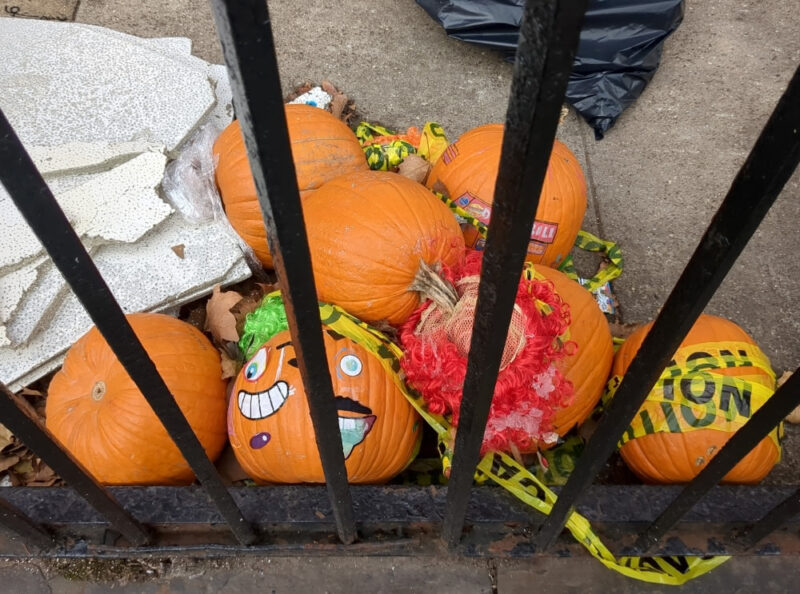I have written extensively about past-their-prime, rotting pumpkins left outdoors in Brooklyn well after prime-pumpkin decor season in October and November. While the problem is not nearly as bad this year as it was in the first couple of years of The New Leaf Journal, there are some pumpkins decomposing on Brooklyn stoops and sidewalks and even in sidewalk tree pits, as we cross the half-way point of January, having gone through myriad freezes and thaws with many more to come. But instead of scarring my growing audience with more rotting pumpkins, I decided today to highlight an example of proper pumpkin pruning, or putting pretty pumpkins out to pasture prior to their putrefaction (or should we say pumpkifaction?).
This post is part of my collection of articles about rotting, non-rotting, and inorganic pumpkins.
I took the above photograph in Carroll Gardens, Brooklyn, on December 19, 2024. I was walking with a friend when she, knowing that I am one of the leading authorities on rotting pumpkins, pointed out this pile of gourds behind a sidewalk- adjacent fence. These pumpkins had the markings of having been decorative. One has face stickers. Another has a logo of a local deli that sits across the street from the scene. Another seems to have head-wear.
But while all the pumpkins in the pile are unique, the piled pumpkins share something important in common, something even more important than that they are all decorative orange pumpkins.
The pumpkins were being given a dignified farewell. The Pumpkin Taker should always do his job this well.
All of the pile pumpkins were intact. None were showing obvious dimples or warts, much less liquifying like a Dali painting or symbol of existential dread. There was no speck of mold. These pumpkins were still in decent enough shape. But their duties, whether they were for halloween, Thanksgiving, or both, were done. Once a pumpkin’s duties are done, especially when those duties involve being exposed to the weather of the Northeast in the late autumn and early winter, the pumpkin should be allowed to retire before it turns into something only vaguely resembling a pumpkin. The pumpkins would want, or do want, to be remembered for their best moments, not their worst. Moreover, as I discuss in a companion post, while some pumpkins are able to courageously defy the odds and hang on through the early winter, forcing them to do so may not be in their best interest.
I tip my hat to the proactive custodians of these pumpkins, which I can confirm were not left to rot after being gathered.
I trust that these pumpkins are all enjoying a wonderful retirement out on the farm.
